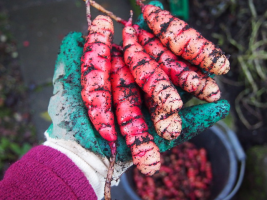I am forming my views still but I want fast growing definitely because the land is quite barren and the hedgerow is thin to almost none existent in places. So I would like first and foremost fast growers for screening and privacy.I would again suggest you have a more in depth think about what you want to achieve. Do you want a load of slow growing curly willows? If not then don't plant them!
Do you want to make baskets or do you think you could sell basket willow? If not then dont grow them. Etc.
I've planted various willows. Some of the fast growing biomass hybrids, mainly for a wind break and to take out the excess nitrogen in a part of our land. They may eventually produce some poor quality firewood.
There are other great benefits though, like being able to weave so I am also interested in that as a side benefit. Also for a sustainable fuel source.
The bio mass ones on west wales willows say they are made specifically for fuel but they should work 'ok' for weaving projects too yes?
That is another good benefit, to be able to make 'benders' and other type of structures from them.
Yea, so expect couple of grand then given the 200 for £235 figure from west wales willows?As for planting density the sites that sell cuttings will tell you, it'll be thousands per acre not 100.
One thing I am cognizant of though, if I am doing all of it alone, is how long will they be plantable for? In one sense if I bought them all at once and took me months to plant them the latter ones might not take right? On the other hand the window for selling cuttings seems to be a matter of a few months too. So it seems there might be tight time constraints either way? Depends on how long they will be plantable for if anyone can answer that for me to give me a better idea.
If it was going to be unmanageable with the time scales alone then I would consider either digger for the weed leveling so I would just have to plant or invite some good hippies for some volunteer days! I have a big network I can tap into for that if I want.

